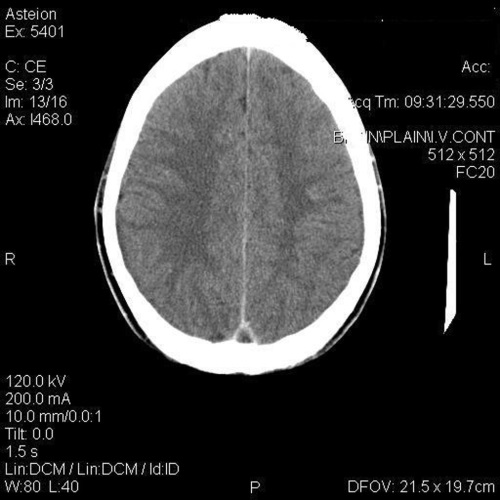Intracranial venous thrombosis
Overview
Features
Sagittal sinus thrombosis
Cavernous sinus thrombosis
Lateral sinus thrombosis
- can cause cerebral infarction, much lesson common than arterial causes
- 50% of patients have isolated sagittal sinus thromboses - the remainder have coexistent lateral sinus thromboses and cavernous sinus thromboses
Features
- headache (may be sudden onset)
- nausea & vomiting
Sagittal sinus thrombosis
- may present with seizures and hemiplegia
- parasagittal biparietal or bifrontal haemorrhagic infarctions are sometimes seen
Cavernous sinus thrombosis
- other causes of cavernous sinus syndrome: local infection (e.g. sinusitis), neoplasia, trauma
- periorbital oedema
- ophthalmoplegia: 6th nerve damage typically occurs before 3rd & 4th
- trigeminal nerve involvement may lead to hyperaesthesia of upper face and eye pain
- central retinal vein thrombosis
Lateral sinus thrombosis
- 6th and 7th cranial nerve palsies
 | |
| © Image used on license from Radiopaedia |  |
CT with contrast demonstating a superior sagittal sinus thrombosis showing the typical empty delta sign. Look at the 'bottom' of the scan for the triangular shaped dural sinus. This should normally be white due to it being filled with contrast. The empty delta sign occurs when the thrombus fails to enhance within the dural sinus and is outlined by enhanced collateral channels in the falx. This sign is seen in only about 25%-30% of cases but is highly diagnostic for sagittal sinus thrombosis
